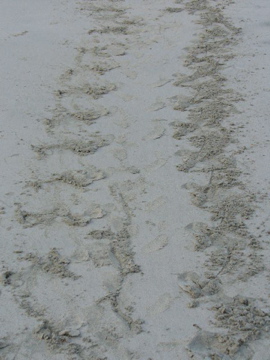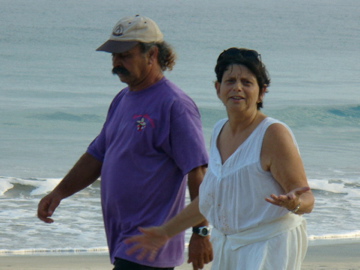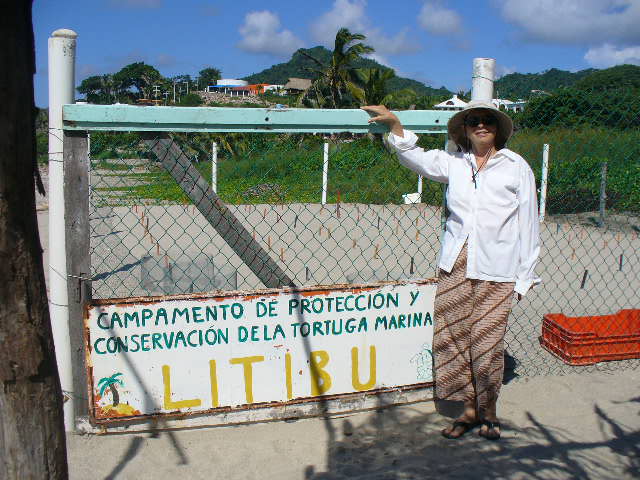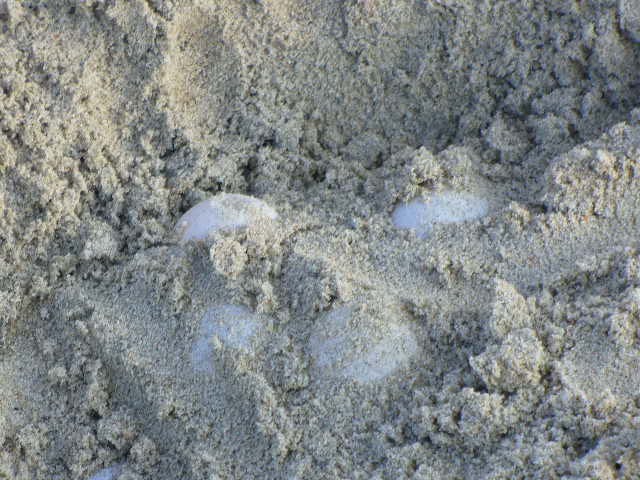Home | News & Articles | Litibu Sea Turtles…Conservation in Action
News & Articles
Litibu Sea Turtles…Conservation in Action
From June to December of each year, the Grupo Ecologico Manos Unidas Por Litibu, A.C and its scientific team, under permission by SEMARNAT, comb the beaches every night on foot looking for turtle tracks and for nesting female sea turtles. Biologists mark the sites, collect data on the turtle, collect eggs, and relocate them to a protected turtle corral area, away from poachers (both animal and human) and carefully guard the nests. In 45-60 days, the incubated eggs begin to hatch out as baby turtles which work their way to the surface all at once. They move quickly across the sand towards the surf to “saturate” their predators (only 1 in 1000 will survive to adulthood) and “imprint” on the beach, as the females return to the same natal beach as adults in 8-10 years to lay their eggs.They then start their long swim out to the deep ocean currents where they will swim the seas of the planet.  The story of turtles in Litibu is ancient. Indeed, the correct name for the beach is Careyeros, which means Turtle Hunter in the indigenious language of this area. Modern history is a gringo who came to this area 22 years ago, Turtle Dave, and would protect the nests, one by one, before International Treaties were signed in 1997 by Mexico to protect the endangered species of Olive Ridley, Hawksbills, and Leatherback Tortugas who nests on these beaches. Saddly, Turtle Dave was forced from his land to make way for the condos, hotels and golf courses now under construction (La Tranquilia, Haixa, and Mayan Palace). Grupo Manos Unidas Por Litibu attempts to continue the work he began. The story of turtles in Litibu is ancient. Indeed, the correct name for the beach is Careyeros, which means Turtle Hunter in the indigenious language of this area. Modern history is a gringo who came to this area 22 years ago, Turtle Dave, and would protect the nests, one by one, before International Treaties were signed in 1997 by Mexico to protect the endangered species of Olive Ridley, Hawksbills, and Leatherback Tortugas who nests on these beaches. Saddly, Turtle Dave was forced from his land to make way for the condos, hotels and golf courses now under construction (La Tranquilia, Haixa, and Mayan Palace). Grupo Manos Unidas Por Litibu attempts to continue the work he began.
 In the 2007 sea turtle nesting season, 191 nests were relocated, 19,000 eggs collected, more than 18,000 sea turtle babies released into the sea, and substantially reduced the quantity of robbed nests by human and animal predators. International estimates are 1 of 1000 hatchlings will survive to reproduce. Because the program is not a tourist based eco-education program, it has an outstanding 93% survival rate for all eggs protected. Boating, especially those boats too close to shore, and humans are the greatest threat to these magnificent creatures. Eggs are extremely sensitive to vibration, temperature change, noise, and any environmental disturbance such as lighting can deter turtles from nesting. In the 2007 sea turtle nesting season, 191 nests were relocated, 19,000 eggs collected, more than 18,000 sea turtle babies released into the sea, and substantially reduced the quantity of robbed nests by human and animal predators. International estimates are 1 of 1000 hatchlings will survive to reproduce. Because the program is not a tourist based eco-education program, it has an outstanding 93% survival rate for all eggs protected. Boating, especially those boats too close to shore, and humans are the greatest threat to these magnificent creatures. Eggs are extremely sensitive to vibration, temperature change, noise, and any environmental disturbance such as lighting can deter turtles from nesting.
 Turtle protection work is hard, tiring physical labor, and volunteers have other responsibilities. The program biologist works 7 nights per week, from sunset to sunrise for the entire 6 month season, for no salary; his committment is extraordinary. Partnerships with the homeowners groups of Litibu, Careyeros, and Punta Negra Beaches have formed to support the A.C. for sea turtle conservation and protection. As residents of these beaches, they are in a unique position to assist in the monitoring of the sea turtles during the nesting season and support the A.C. as their own. However, many more volunteers are necessary. Ironicly, the as the mega development projects along these beaches will negatively impact the turtle population, it may provide better security against nest robbers. Turtle protection work is hard, tiring physical labor, and volunteers have other responsibilities. The program biologist works 7 nights per week, from sunset to sunrise for the entire 6 month season, for no salary; his committment is extraordinary. Partnerships with the homeowners groups of Litibu, Careyeros, and Punta Negra Beaches have formed to support the A.C. for sea turtle conservation and protection. As residents of these beaches, they are in a unique position to assist in the monitoring of the sea turtles during the nesting season and support the A.C. as their own. However, many more volunteers are necessary. Ironicly, the as the mega development projects along these beaches will negatively impact the turtle population, it may provide better security against nest robbers.
 Fundraising is underway to support the program’s needs. The purchase of an all terrain vehicle (ATV) would allow the biologist to patrol the beaches more efficiently in both tracking numbers of nesting sea turtles, as well as discouraging human or animal poachers. Donations are always welcome, although the material needs are small. Volunteers for nightly patrols and interns for 3-6 weeks are our greatest need. Fundraising is underway to support the program’s needs. The purchase of an all terrain vehicle (ATV) would allow the biologist to patrol the beaches more efficiently in both tracking numbers of nesting sea turtles, as well as discouraging human or animal poachers. Donations are always welcome, although the material needs are small. Volunteers for nightly patrols and interns for 3-6 weeks are our greatest need.
All donations are tax-deductible and can be made in the US, Canada, and Mexico via www.peacemexico.org, under Turtle Project.
|







